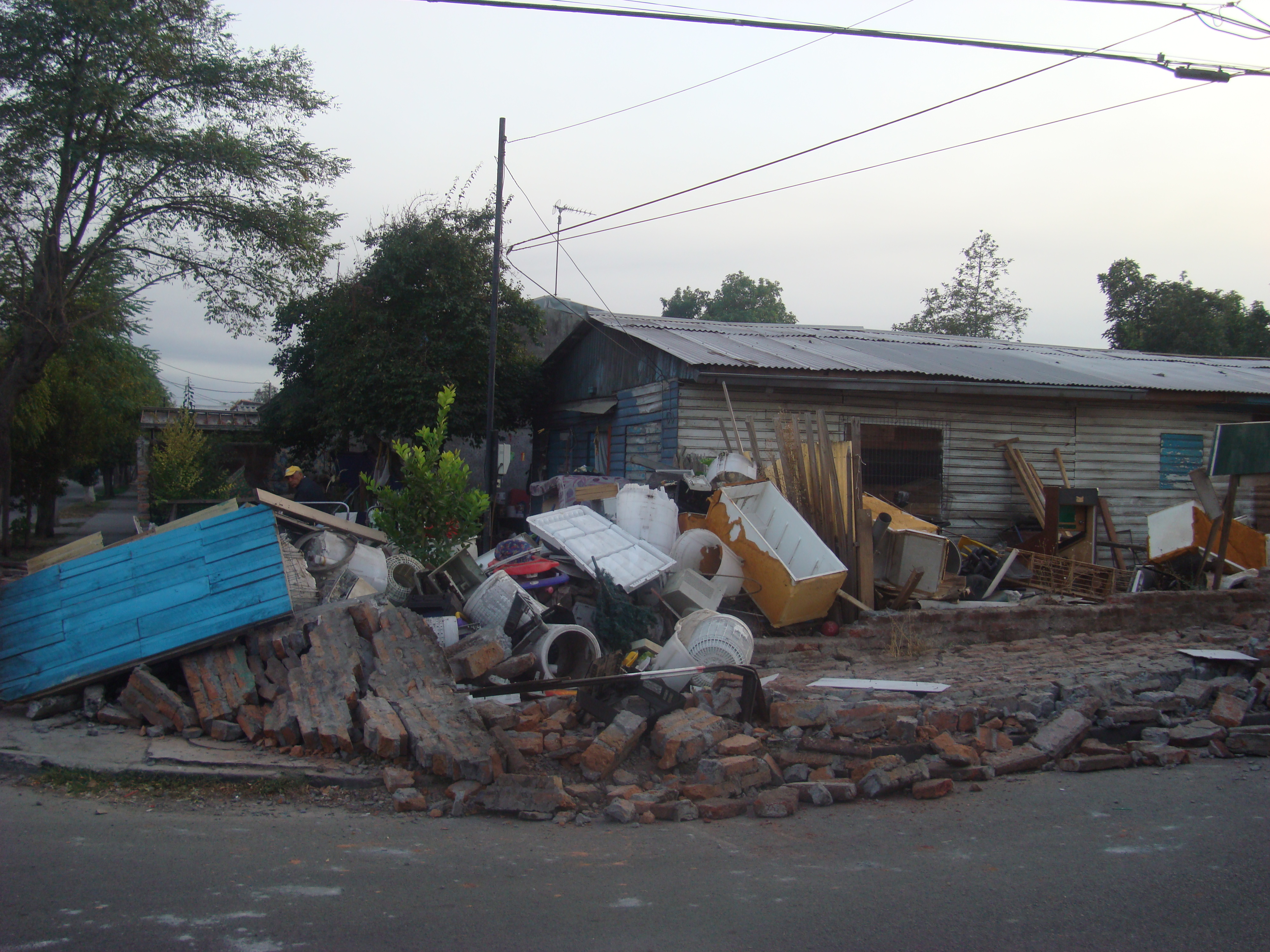wake-up poncho
Problem and context
After the 2010 earthquake in Chile; many people had to move out of their houses and live in shared places due to structural damage or total loss in their houses. It was a period of time where most of us went to help, specially to the regions, where the damage was more vast. This context was used as well as a workshop topic; on strategic solutions for problems of the people who lost their home. It was a short project of two weeks. We worked based the brief of the Crea Por Chile contest.
Photo from Wikimedia commons, taken by Alejandro Jofré. Original url: https://www.flickr.com/photos/djdroga/4392414872
Analysis
The span of the project was short; so I mainly worked a solution by making two short brainstorming processes: I started by drawing the problems of the earthquake victims that could be solved or improved; and then started ideating possible solutions; targeting simplicity and cost efficiency. It was also helpful having been in many of the affected places, living myself in camps as well, for short periods.
The resulting idea targeted the problems of people that have to live temporarily in rooms such as community centers or schools with many other people. Privacy and deficient heating are two problems in this context; where public spaces such as schools, usually don't have good heating as they are used only during the day.
Solution
The idea is a simple application of the Latino-american traditional poncho, as a solution to sleep and wear. It is made of thermal polar fabric and keeps the heat while sleeping. The idea is that when waking up and dressing, it serves as a poncho, that keeps the user's sleeping temperature and privacy while dressing. It was presented in the workshop with it's accompanying infography; and submitted to the Crea Por Chile contest with no results.

